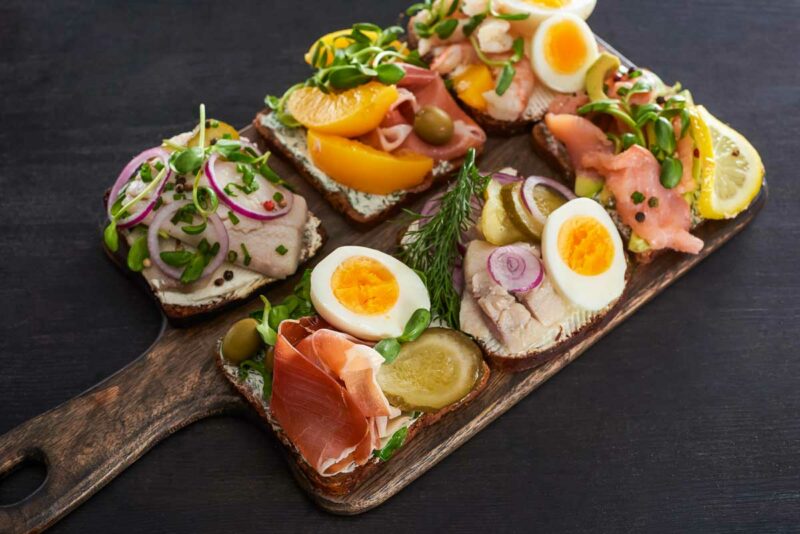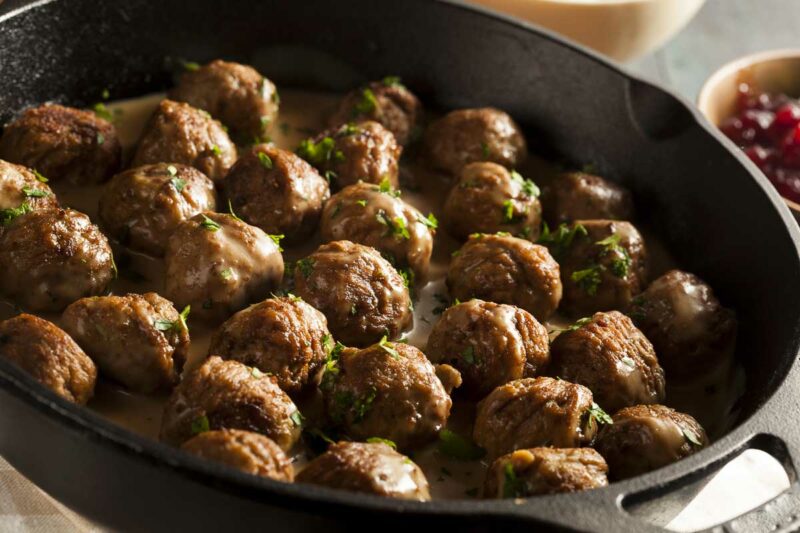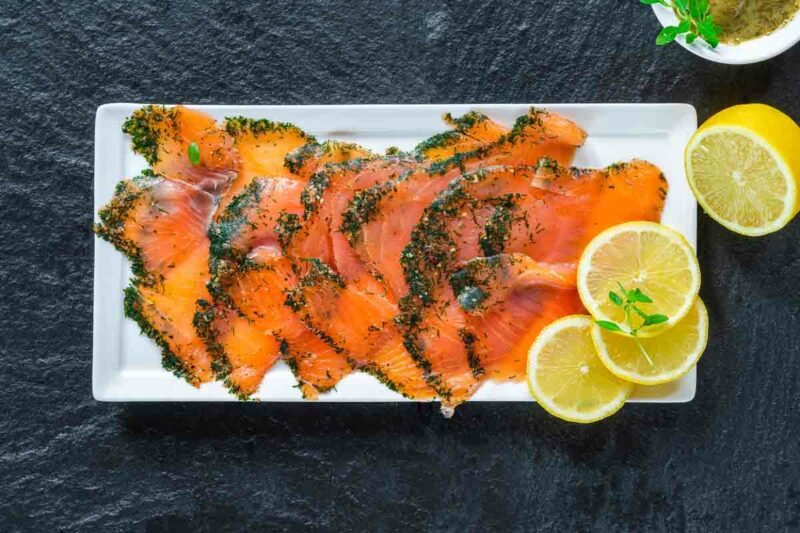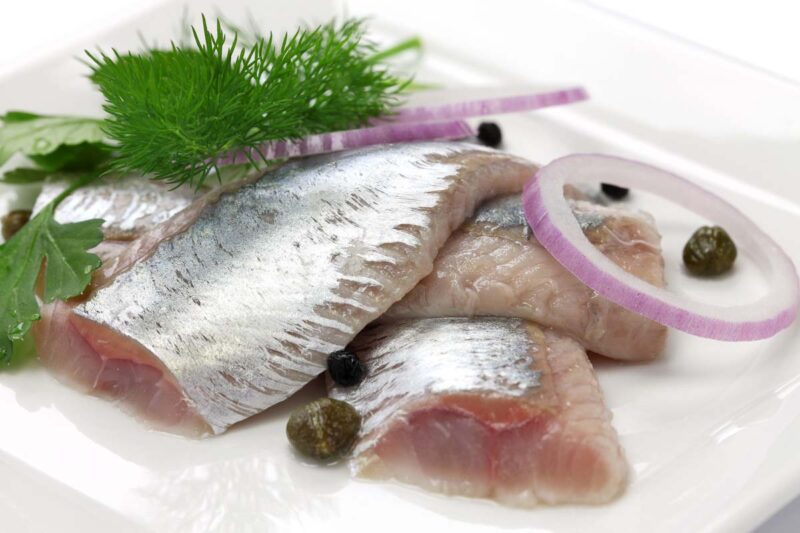Scandinavian cuisine offers a rich taste of Nordic traditions, from hearty stews to fresh seafood dishes. Submitted by expert Henry Caldwell, this guide explores the iconic flavours and culinary heritage of Scandinavia.
Scandinavia is a region renowned for its breathtaking landscapes, rich history, and distinctive cultural traditions. Equally fascinating is its culinary heritage. It is a tapestry of flavours deeply rooted in the local environment, historical events, and seasonal availability.
From the reindeer stews of the Arctic north to the fresh seafood of the coastal towns, Scandinavian cuisine offers an unforgettable experience. Food lovers seeking authenticity will be thrilled.
If you’re planning a journey through the northern lands, consider Scandinavia tours for a personalized experience that includes sampling some of the best traditional dishes. Let’s explore some of the delights that await your taste buds.The roots of Scandinavian cuisine
Geography and climate shape Scandinavian cuisine. With long winters and short growing seasons, the food culture emphasizes preservation techniques like curing, smoking, and pickling.
Traditionally, Nordic peoples relied on what nature provided, with an emphasis on meat, fish, root vegetables, and wild berries. Over time, these ingredients became staples in a cuisine that’s both simple and sophisticated.
In recent years, there has been a revival of interest in traditional Scandinavian fare. This is thanks in part to the New Nordic movement, which celebrates local ingredients and seasonal cooking. However, traditional dishes still hold a central place in Scandinavian homes and restaurants. They offer a taste of the region’s rich cultural heritage.
Classic dishes you must try

A quintessential Danish open-faced sandwich, smørrebrød is as much about aesthetics as taste. Cooks build it on slices of dense rye bread (rugbrød) and top it with ingredients like pickled herring, smoked salmon, liver pâté, or boiled eggs. They carefully arrange each element to create a visual masterpiece.
Each bite offers a burst of flavour and texture. You can enjoy the crunch of the bread and the smoothness of the toppings in every bite.
You’ll find smørrebrød served in cafes across Denmark, making it an easy dish to sample while exploring cities like Copenhagen. It’s also a versatile option, served for breakfast, lunch, or dinner, depending on the toppings.
Kjøttkaker (Norway)

One of Norway’s most beloved comfort foods, kjøttkaker are traditional meatballs that cooks prepare with a mixture of minced beef and pork. They season the meat with salt, pepper, and nutmeg, then typically serve the meatballs with boiled potatoes, gravy, and lingonberry sauce.
This hearty dish is especially popular during the colder months, providing warmth and sustenance.
For a more immersive experience, consider private tours to Norway that offer culinary-focused itineraries. You can visit local farms or family-run restaurants to sample homemade kjøttkaker. These are prepared using age-old recipes passed down through generations.
Gravlax (Sweden)

When it comes to Scandinavian seafood, gravlax is a must-try. This dish involves curing fresh salmon with a mixture of salt, sugar, and dill, resulting in a delicate, slightly sweet flavour. Traditionally served with mustard sauce and crispbread, gravlax is a favourite appetizer or light meal throughout Sweden.
While upscale restaurants serve gravlax, markets also sell it, and casual eateries often include it on their menus. This allows you to enjoy this delicacy in various ways.
Scandinavian seafood specialties
The cold waters of the North Sea and Baltic Sea are home to some of the world’s best seafood. It plays a central role in Scandinavian cuisine. The region’s love for fish, whether smoked, pickled, or freshly caught, is evident in many of its dishes.
1. Pickled herring

No discussion of Scandinavian cuisine is complete without mentioning pickled herring. This beloved dish is popular in countries like Sweden, Denmark, and Norway. Preservers soak herring in a vinegar-based brine, often adding onions, spices, and sometimes mustard or curry. They usually serve it with potatoes, sour cream, and chives.
Pickled herring is particularly popular during festive occasions like Christmas and Midsummer. However, it’s enjoyed year-round as part of a traditional smörgåsbord or with a cold beer.
2. Rakfisk (Norway)

Rakfisk offers a more adventurous option for those with an open palate. Cooks ferment trout and typically serve it raw with flatbread, sour cream, and onions. Norwegians have long included this dish in their food traditions, especially during winter celebrations. While its strong aroma might turn some people away, many Norwegians consider rakfisk a delicacy.
If you’re visiting Norway during the rakfisk season (November to February), you can attend rakfisk festivals. Here, they prepare different variations of this dish.
Sweet treats of the north
No Scandinavian meal is complete without indulging in its delicious pastries and desserts, many of which have become famous worldwide.
1. Kanelbullar (Sweden)
Swedish cinnamon buns, or kanelbullar, are a symbol of Swedish fika (coffee break). These sweet, spiced rolls are made with cinnamon, cardamom, and a generous sprinkling of sugar. Soft and fluffy, they’re best with a cup of coffee.
If you’re wandering through Stockholm or Gothenburg, stop by one of the local bakeries. Experience a true Swedish fika, complete with freshly baked kanelbullar.
2. Kransekake (Norway and Denmark)
Kransekake is a towering cake made from almond flour, sugar, and egg whites. People often serve it at weddings, Christmas, and New Year’s celebrations. Bakers construct the cake by stacking concentric rings on top of one another, and its slightly chewy texture and rich almond flavor make it a crowd favorite.
Whether in Denmark or Norway, you’ll find variations of kransekake that reflect local customs. However, the core ingredients remain the same, making it a symbol of celebration and togetherness.
Beverage pairings
Traditional Scandinavian cuisine is often accompanied by distinctive drinks, many of which have been enjoyed for centuries.
1. Akvavit
A popular Scandinavian spirit, akvavit is distilled from grains or potatoes and flavoured with herbs, primarily caraway or dill. It’s traditionally served as a shot during festive meals or celebrations. Its strong, warming taste pairs well with rich dishes like gravlax or pickled herring.
2. Glögg
During the holiday season, Scandinavians enjoy glögg, a mulled wine spiced with cloves, cinnamon, and cardamom. This hot drink is particularly popular in Sweden and Denmark, where it’s often served with almonds and raisins.
Where to taste traditional Scandinavian cuisine
If you’re ready to embark on a culinary journey through Scandinavia, there are countless ways to experience its food. From street markets to fine dining, the region offers a variety of settings to sample its best dishes.
- Stockholm, Sweden: Visit one of the many markets, such as Östermalms Saluhall, to taste traditional fare. You can also dine at one of the city’s renowned restaurants like Oaxen Krog, which specializes in modern interpretations of classic Nordic dishes.
- Oslo, Norway: For a mix of history and cuisine, head to Mathallen, Oslo’s indoor food market. You can enjoy fresh seafood and local meats there.
- Copenhagen, Denmark: Home to some of the world’s best restaurants, like Noma, Copenhagen is the perfect place to experience New Nordic cuisine. However, you can still enjoy traditional dishes like smørrebrød.
Final thoughts on Scandinavian cuisine
Scandinavian cuisine is a reflection of the region’s landscapes, history, and people. Whether you’re savouring a simple smørrebrød in a Danish café or indulging in a lavish seafood spread in Norway, each dish tells a story.
As more travellers seek out authentic food experiences, Scandinavia’s culinary heritage continues to shine. This makes it a must-visit destination for food lovers. So pack your bags and get ready to taste the Nordic delights that await you.
You might also like
Which of these Nordic delights will you try?
About the author

Henry Caldwell is a seasoned travel writer with a passion for uncovering the world’s most captivating traditions and hidden gems. With a background in European history and a keen eye for detail, Henry brings destinations to life through vivid storytelling and insider insights. His articles cover everything from regional cuisine to vibrant festivals and serene gardens, offering readers an immersive travel experience.
Photo Credits:
All photos on this page are either shot by our team and watermarked as such or stock images from Depositphotos.


Alex+J.+Cavanaugh
While I won’t do raw fish, I will try those other dishes.
And we do want to visit the area as all the best prog rock bands are Scandinavian. (With two exceptions – Rush and Dream Theater.) So we will eat and rock our way through the countries!